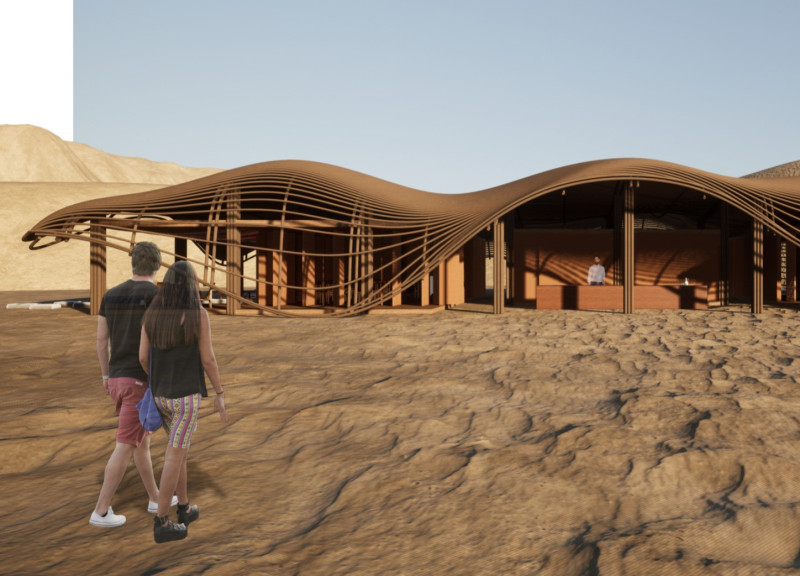5 key facts about this project
Mega Dunes Eco Lodges is located in the barren beauty of the Arabian desert, where it offers a unique space for relaxation. The design focuses on blending luxury with environmental sensitivity. Its concept highlights the need for a strong connection between the built environment and the natural landscape. The architecture features a roof that echoes the shapes of the sand dunes, which helps the structure fit naturally into its surroundings.
Architecture Concept
The design centers around a roof structure that provides protection from the sun while allowing for natural airflow. This thoughtful approach enhances comfort for those inside. The roof shape is functional, addressing the area’s climate while creating a visual link to the nearby dunes. By maximizing ventilation and light, the building responds well to the demands of the harsh environment.
Materiality
Materials play an important role in the construction. Palm leaves and bamboo are used throughout the design, reflecting the local resources available in the area. This choice not only respects traditional building methods but also emphasizes a commitment to sustainability. Using these materials adds to the overall character of the lodges and allows them to blend in with the natural world around them.
Common Hub
The common hub serves as a gathering place for visitors. It includes different areas for dining, reception, and lounging, all covered by the same roof structure. This roof filters harsh sunlight and provides a comfortable setting for socializing. Bamboo columns support the roof, drawing on local architectural traditions while maintaining a contemporary feel. This design encourages interaction and builds a sense of community among guests.
Interior Design
Inside the lodges, the focus is on simplicity and comfort. The interiors are designed to reflect local culture while providing a modern atmosphere. Spaces are arranged to promote both functionality and connection to the outdoors. Natural light and ventilation enhance the living experience, making each unit feel welcoming and connected to its environment.
The roofing design captures sand from the dunes, reinforcing the building’s integration with the landscape while improving passive cooling features.























































